Targa Florio Austin-Healey Sprite - Mystery of the radically evolved BMC racer
This ‘frogeye’ Sprite was an early works rally car that was later much-modified to compete on the Targa Florio, Circuito del Mugello and at the Nurburgring.
Words James Elliott
Photography Tim Scott
THE EYES HAVE IT
Please cast your mind back to the Models page in the July 2021 edition of Octane (number 217, the one with a McLaren F1 and Porsche 911 GT1 and Mercedes CLK GT1 on the cover). Struggling? Well, one of the models featured was a ‘rustic’ French resin handbuilt of an unfamiliar ‘1969 Austin-Healey Sprite’ that looked like a baby sports prototype. Shortly afterwards we received a letter from a John Phillips, the current custodian of the car, who related a bit more of its complex and fascinating history. And we were hooked.
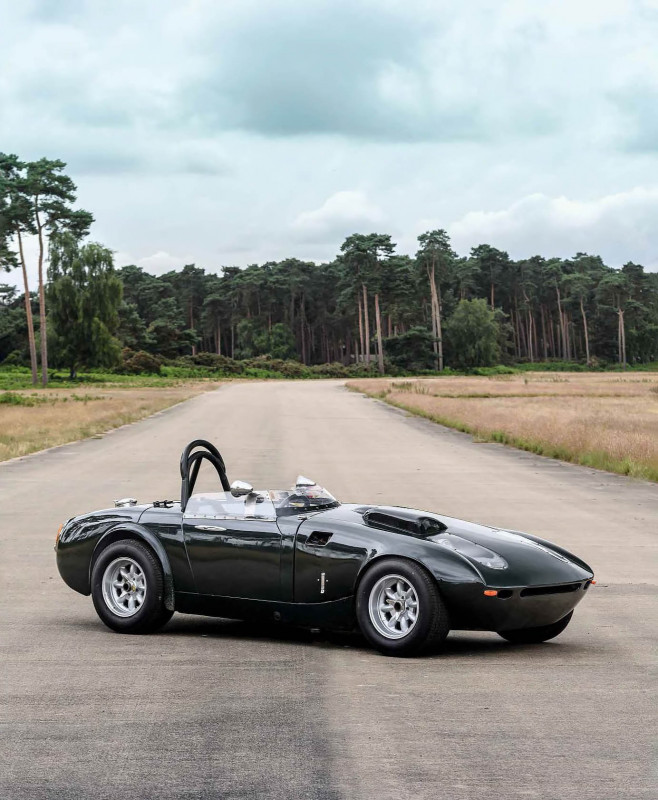
Plans were made, postponed, dashed, remade (as they have been for most things over the past couple of years) until we finally met up at RAF Bentwaters in the summer. The Sprite was driven up there and delivered on a trailer by an impressively dedicated posse-cum-support-group from the Sutton & Cheam Motor Club in South London.
‘There was no mention of the extremely rare, one-of-six Le Mans gearbox bolted to the engine’
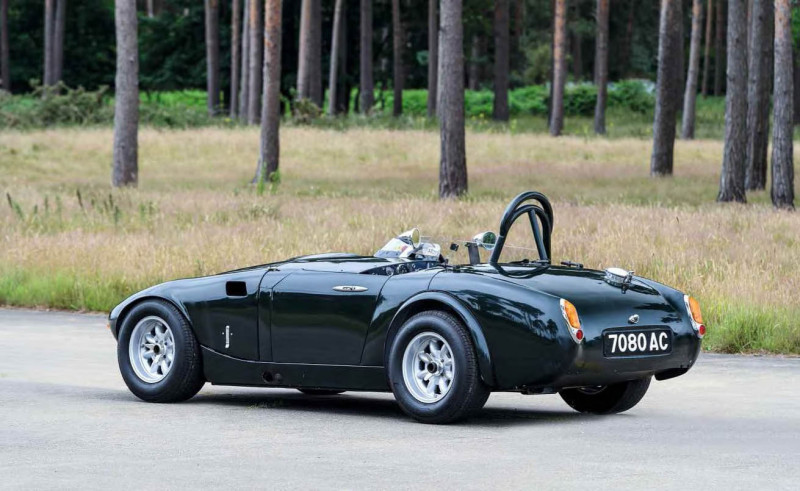
Much photography followed, and an exhilarating drive, but first the history. Warning: it is so convoluted you might need to take notes.
The car is actually a 1959 Sprite, and started life as a red Mkl Shorrock supercharged 948cc Frogeye owned by the Donald Healey Motor Company. It was the first works Sprite to compete at the Targa Florio (in 1959, with Bernard Cahier and Tommy Wisdom) and followed up that outing with a run on the Alpine Rally (Wisdom and Jack Hay) early the following year, which ended — quite literally — in a cliffhanger on the Vivione Pass.
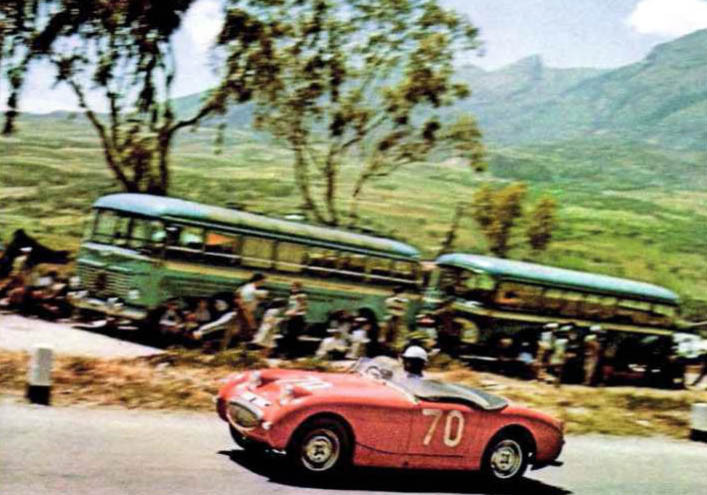
Footnote 1: there is believed to be another car in America that may also lay claim to the identity of that works car, having been issued with the same registration number when it was sent out to the US to run at Sebring.
On 30 September 1960 the then-iris Blue Sprite was advertised for sale by Healey, listed in Autosport as a low-mileage ex-company car (!), and it was bought from the London showroom by clubman racer Jack Wheeler. He did some local rallying in the Sprite with a glassfibre Sebring bonnet donated by John Sprinzel before visiting Peels in Kingston to change the steel body to aluminium and to fit
an alloy hardtop. Over the next few years Wheeler raced the Sprite in club events, but he and his pals from Coburn Improvements were in the pub around Christmas 1965 when they decided to do some serious racing and entered the Targa Florio the following May. The engine was swapped for a modified 1275 Cooper S block and Mk3 Sprite crank, taking capacity to 1350cc, which unfortunately pitched it into the up-to-2.0-litre class against the works Porsches! The gearbox was also changed to a stronger close-ratio overdrive MGB unit. The engine was run-in on the drive down from London to Sicily, being taken off the trailer in France and driven unsilenced across France and Switzerland before being put back on the trailer in Milan for the rest of the journey.
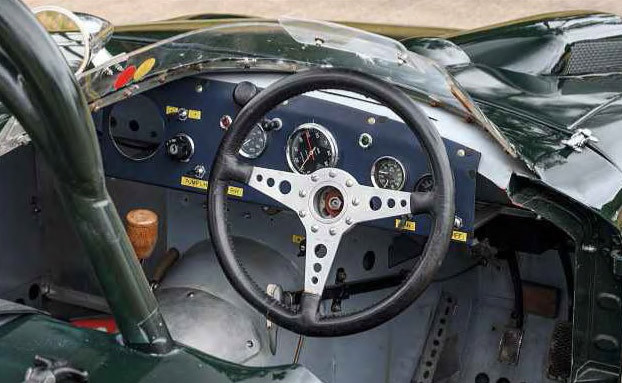
In its fresh Connaught Green paintjob, it followed disappointment on the Targa Florio with the Circuit of Mugello, where it was leading its class until a stub axle broke on the final lap. In 1967 it ran again on the Targa Florio (tenth on the road, fifth in class) and Niirburgring 1000km in May, Mugello in July (with the roof painted white to reflect the intense north Italian heat) and the ’Ring 500km in September.
It competed as a hardtop coupe for three full seasons (1966-68) until it was decided to again change the car radically, this time into an open-top prototype with a Peels bonnet looking much as it does today. Footnote 2: during this transformation the coupe bodywork and unused parts were saved, to be rebuilt onto another companion' chassis, which is also now looked after by Phillips.
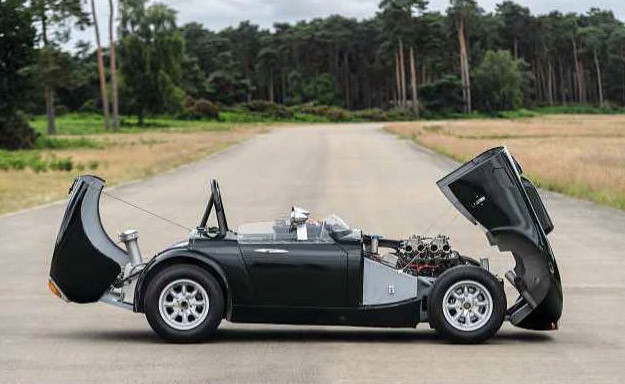
By that stage ‘7080 AC’ would run either a dry-sump A-series with eight-port crossflow cylinder head loaned by BMC and fed by twin Weber 40 DCOE carburettors, or with a highly tuned BMC 999cc ex-Formula 3 A-series to push it back down into the up-to-1000cc class. For 1968 it was also running fully independent Lotus Elan 26R suspension. The chassis was also modified so engine and box could be moved back for better balance and handling, along with wider wheels and tyres.
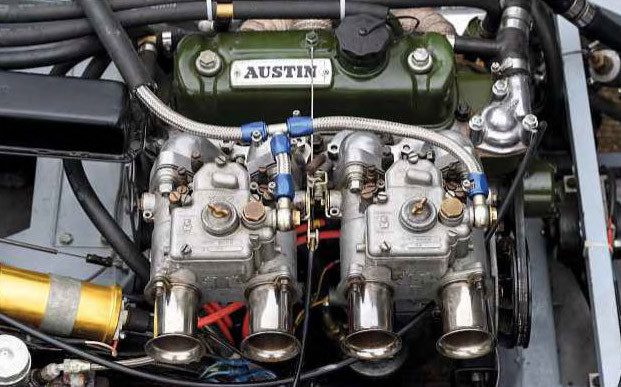
Its svelte new 1969 form also shrouded a newly (and surreptitiously) acquired ex-works five-speed Le Mans gearbox from the streamlined Sprites that ran at La Sarthe. There is a £300 invoice from Geoff Healey for a 1293cc engine ‘including manifold and scrap cylinder head’, but the head was fine and there was no mention of the extremely rare, one-of-six gearbox bolted to the engine. No doubt that was enough to pull the wool over the eyes of the accounts department.
In the hands of Wheeler and habitual co-driver (and Mini racer) Martin Davidson, 7080 AC first raced at the Targa Florio, then the Niirburgring 1000km, Circuito delMugello and finally at the Niirburgring 500km. It was during that second Niirburgring outing that it wore the number 28 as depicted in the MEA kit43 model. That also marked the Sprite’s final race as, while attempting a sub-ten-minute lap, Wheeler rolled it after exiting the Karussel too early and being spat out, as often happened. The Sprite was heavily damaged but, because at its earlier Niirburgring 1000km appearance a zealous scrutineer was unhappy with the roll hoop height and an ad hoc extension had to be welded on, Wheeler was not.
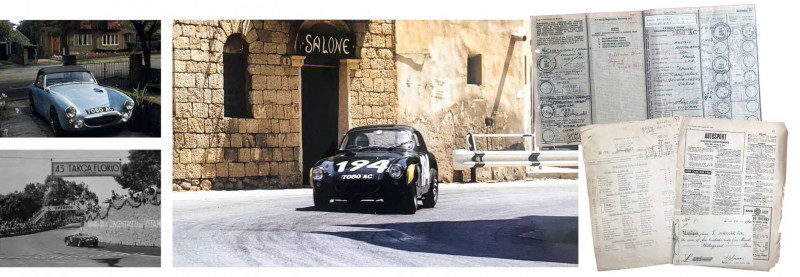
Clockwise, from top left In Iris Blue, as bought by Jack Wheeler, but with Sprinzel's Sebring front end; at Campofelice on the 1966 Targa; logbook shows Donald Healey Motor Co as first owner; Autosportad and Wheeler's receipt; 1967 Targa; practice at the 'Ring in 1969; earlier run there that year; at the 1969 Targa Florio; overhanging its transporter on the ferry in '68; works outing on 1959 Targa.
The Sprite was transported back to London, pushed into the corner of the garage, covered with a tarpaulin and forgotten about while Wheeler and his cohorts focused their efforts on the Jerboa — a long-tailed prototype on a Ginetta G12 chassis — for the 1970 season.
‘The smart handling is not a surprise when you bear in mind the suspension is all Lotus 26R’
That’s where former Ronson production engineer and ship engineer Phillips comes to the fore of the story. Phillips was involved in the Jerboa project that was created with an eye on the Index of Thermal Efficiency at Le Mans.
‘I went to the Targa with them as support crew in 1970 when I was 19, and it was a different age. It was so casual. We would have dinner and then drivers would just jump in their cars and do a practice lap on public roads at night. I drove down with Charlie Millington in a Cortina Mk2 1600 saloon that blew a piston and used five gallons of oil from Rome to Sicily — it was like a mobile bonfire, encased in oil smoke and with oil covering the screen — but we just carried on, rebuilt the engine in Sicily and drove it home. It was a wonderful experience and all done on a shoestring. They always broke the trip home with an overnight at Hotel Gianna on the Futa pass.
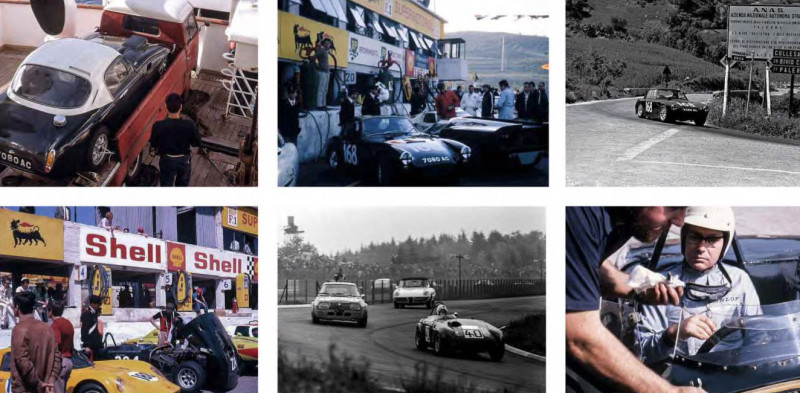
Clockwise, from top rightDespite non-standard tail-lights, Frogeye heritage is obvious from this angle — far more so than from the heavily modified nose; twin-carb A-series is set well back in chassis; front clamshell matched by rear, for easy access to mechanicals; no speedo in stripped cockpit.
‘I had known Jack all my life, though. Our families used to live next-door to each other in Wickham Avenue in Cheam and I remember 7080 AC as it was when Jack first brought it home in blue in October 1960. I was about nine or ten and recall him drilling holes wherever he could in the car and dropping every bit of billet into a bucket. When I asked him why he was doing that, he told me to lift the bucket and I couldn’t. “That’s why I am doing it,” he explained. Jack was constantly developing the car — almost every time he competed it was different — modifying the body, vents and scoops, mechanicals or fuel tanks or whatever. So much was changed and it was so constant that even I get confused sometimes as to what was done when.’
After the crash at the Niirburgring the Austin-Healey sat for 25 years until the mid-1990s when Wheeler decided to restore his Sprite/s. The trigger had been Tom Coulthard and John Sprinzel’s research for their book Spritely Years, when they got in touch with Jack to gather details of his cars. He thought the best way to answer the in-depth questions was to restore it/them to its/their ultimate incarnation/s, exactly how it/they had run in 1967/1969.
That’s when Phillips came back into the picture. He explains: ‘When Jack retired, he bought a yacht and sailed around the world a lot, so I didn’t see him for quite a while until he turned up unexpectedly at my father’s funeral in 1987. After that he fell off the radar again, before popping up in the late 1990s. He mentioned that he was rebuilding the car so I just got involved.’
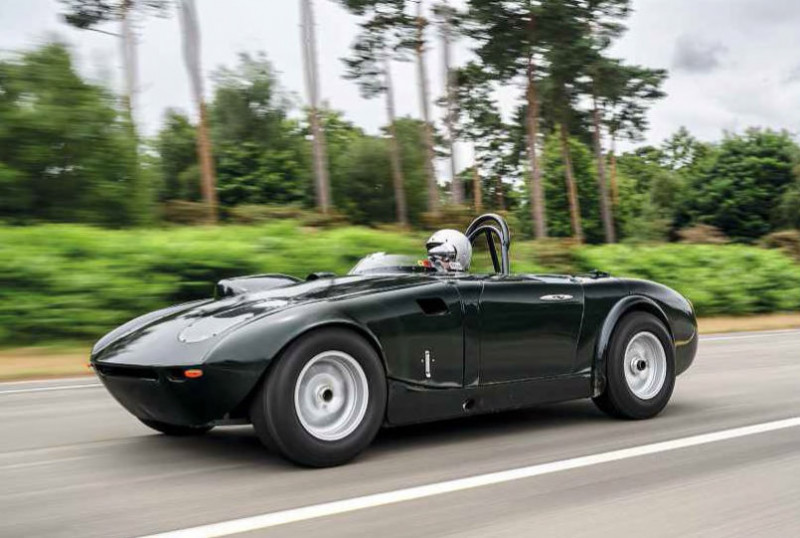
Many of the people roped in were those who helped build and develop the car in the first place, notably Brian Wheeler, who looked after the chassis and the aluminium bodywork. The work was finished in 2008 — ‘Jack said he could have bought two new Ferraris for what it cost’ — and, while the closed car has raced at Goodwood three times with Martin Davidson at the wheel, the open car representing its final iteration has barely turned a wheel.
Left and below leftPossible life-saving roll-hoop extension was ‘crafted’ by BP engineers in the Nurburgring pits to satisfy a cautious scrutineer; Jack Wheeler with Pau no Aaltonen at Goodwood Revival.
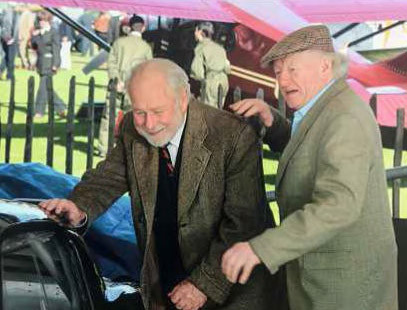
When 7080 AC arrives at Bentwaters it is fairly fresh from an engine rebuild by Phillips and has been tested only at Enstone. It is a beguiling shape, very Frogeye from the rear, altogether more macho at the front, with its defining feature hidden beneath the Perspex covers cut into that shapely, wind-cutting front section. It is snug in the driver’s seat, but everything feels pleasingly used and ready to go — not as if the car has been restored, but as if it has just come off first practice on the Targa and it’s my turn to put in a time.
Having marvelled at the Speedwell doorhandles and settled into the comfy seat shaped on Timo Makinen’s bum), it all feels proper racing car. There’s no speedo, but there’s a telltale on the tacho at 4500rpm, which is my limit for the day. There’s the usual battery of dials, but that full-race spec is again betrayed by the switch to circulate the diff oil, electric fan on minuscule radiator, and the presence of twin electric fuel pumps. There is a passenger seat, as the regs decreed, but the hard panel doesn’t completely cover it.
The little Moto-Lita wheel is tilted towards the dash and you can see the hefty bulge to clear the big twin Weber 40s through the aeroscreen. Soon you can hear them, too, gobbling away as part of the cacophony as soon as you fire up this raucous little fizzbomb.
There’s a racing clutch, so there is precious little travel and it is basically an on-off switch. In first, the Webers fight the fuel influx and it is pretty fluffy until you can give it the revs to smooth it out. From there, though, it accelerates lustily through all the five forward gears, with an appetite and noise that belie its dimensions. Despite the engine size, what this Sprite delivers feels like real punchy power, not the customary nippy-zippiness of a diminutive sports car.
The gearbox is tight and the kinked lever not exactly a delicate wand, but the action is reassuringly positive without ever being too light. Even with that 4500rpm rev limit you rapidly gather plenty of pace and the shining feature of the car soon comes to light. The steering is incredibly direct and an absolute delight, making you feel like you are jinking a Lotus Eleven through those corners.
Similarly, the excellent brakes don’t appear to be servo-assisted at all, and what resembles a relatively agricultural accelerator (albeit with thoughtful footstay underneath) turns out to be very sensitive and full of feel. The smart handling, too, is impressive, though not surprising when you bear in mind that the suspension is entirely Lotus 26R. Better still, though the pricey magnesium alloys with spinners are shod with incredibly fat and fantastically sticky tyres offering sensational grip, they don’t completely rob the car of feedback or delicacy as such a set-up usually does. It really is a super little car and lovely to drive — it’s been delightful to make its acquaintance and I’m sorry to say goodbye.
Owners approach Octane with potential feature cars for myriad reasons, but this one was a bit special, as Phillips explains: ‘When I saw the model in Octane, I thought bloody hell, someone’s made a model of the open car. I didn’t know that anyone knew it still existed, which is why I came to Octane, so then everyone would.
‘Martin passed away in February, and Jack and Martin were probably the only Brits to do eight consecutive Targa Florios, which is a terrific achievement. The co-operation Jack got from BMC and the Healeys — including translation services from Geoff’s wife Margot — shows how much they admired his efforts, too. Jack is now 93 and sold me the cars two years ago because I’d done so much work with him on them — he knew I’d keep them exactly as they should be, the closed car just as it raced in 1967 and this car exactly as it raced in 1969.
‘It would be lovely to see them race again, but I am terrified of anything going wrong because the cost of replicating them would be astronomical and I don’t want to break my promise to Jack. I still don’t feel I own them; I am just the custodian of Jack’s legacy.’
Over 50 years on, this car still lives in a suburban garage off a tree-lined South London street and is cared for by a single devoted owner with the help of friends from the local car club. That’s my favourite aspect of this story: it embodies the clubman’s spirit today just as it did in its pomp with Jack Wheeler. In the time it took us to get this story together, Martin Davidson left us and Jack Wheeler suffered health issues that meant he could not be interviewed, and that is to my eternal regret. Yet with Phillips, we know that both the Sprite and its life story are in safe hands.

